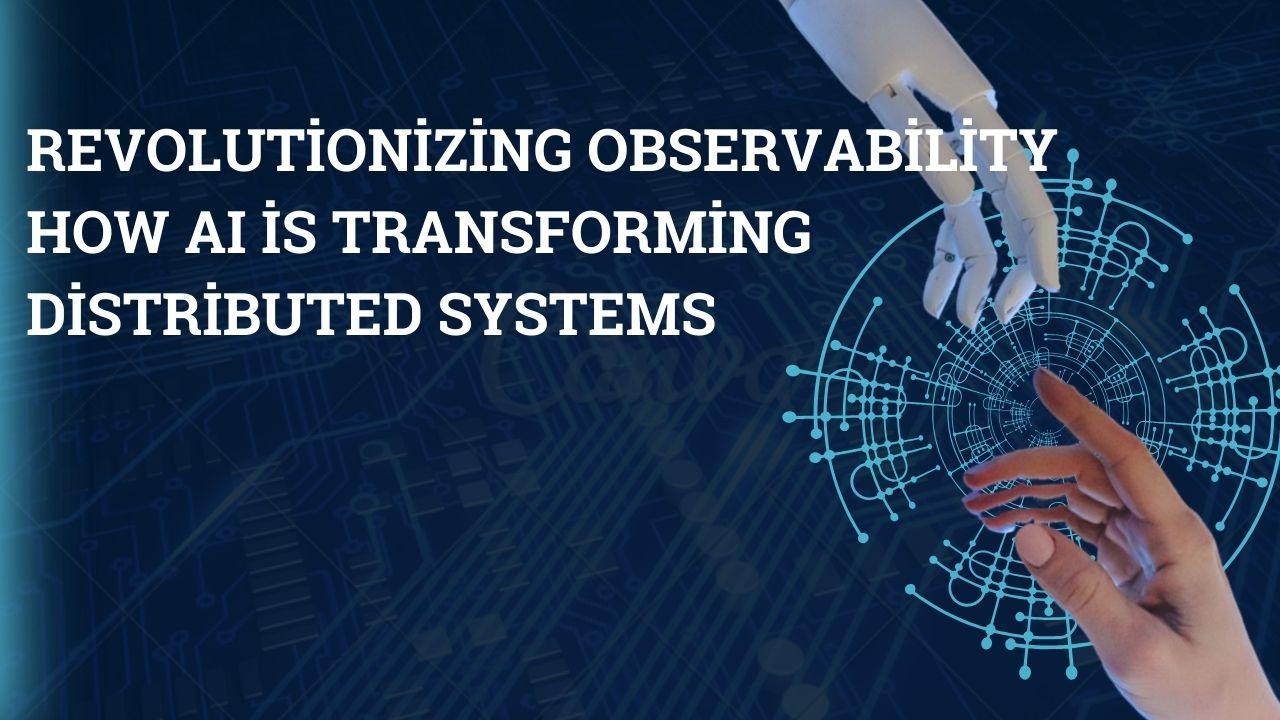Share Share Share Share Email Artificial Intelligence (AI) is reshaping the landscape of observability in distributed systems. Abhishek Walia , explores how AI-driven observability solutions enhance monitoring, management, and system resilience in complex IT environments. This article delves into the key innovations highlighted in his work, showcasing the transformative power of AI in distributed system observability.
Intelligent Monitoring: Beyond Traditional Limitations Traditional monitoring systems often rely on predefined thresholds, leading to inefficiencies in dynamic environments. AI introduces real-time data analysis, utilizing models like Isolation Forest and Support Vector Machines (SVM) to detect anomalies with greater precision. By leveraging Long Short-Term Memory (LSTM) models, AI can enhance time-series analysis, reducing false positives and improving operational efficiency.

The integration of these AI capabilities allows for adaptive learning from historical patterns, enabling predictive maintenance rather than reactive responses. Furthermore, ensemble methods combining multiple algorithms can provide more robust anomaly detection across diverse data streams. This intelligence-driven approach ultimately translates to reduced downtime, optimized resource allocation.
Anomaly Detection: Identifying Threats Before They Escalate Anomaly detection is crucial for maintaining system stability. AI-powered models like SVMs and Convolutional Neural Networks (CNNs) help identify irregularities in system metrics, preventing potential failures. AI’s ability to analyze patterns in network traffic, CPU usage, and memory consumption enables early detection, reducing downtime and improving security measures in distributed systems.
These advanced models continuously learn from operational data, adapting to evolving system behaviors without manual reconfiguration. By incorporating reinforcement learning techniques, anomaly detection systems can prioritize alerts based on business impact and criticality. Additionally, transfer learning allows organizations to leverage pre-trained models across similar infrastructure components, accelerating implementation and reducing false alarms.
Federated learning approaches enable anomaly detection across multiple data centers while preserving data privacy. Real-time visualization tools powered by these AI models provide intuitive dashboards for operators, highlighting potential issues before they cascade into system-wide failures. This proactive approach transforms traditional monitoring from reactive troubleshooting to predictive maintenance, significantly enhancing overall system resilience and operational efficiency.
Data Correlation: Unifying Insights Across Systems One of the most significant challenges in distributed environments is correlating data from multiple components. AI simplifies this process by utilizing techniques like dimensionality reduction and feature extraction to unify system data. Deep learning models, such as Graph Neural Networks (GNNs) and LSTM networks, reveal hidden dependencies between various system components, facilitating faster root cause analysis and minimizing response times.
Predictive Maintenance: Proactively Preventing Failures Predictive maintenance powered by AI transforms IT operations by analyzing time-series data to anticipate component failures. AI models like Recurrent Neural Networks (RNNs) and Autoregressive Integrated Moving Average (ARIMA) detect system performance trends, enabling proactive maintenance scheduling. This approach not only reduces downtime but also optimizes resource allocation, ensuring seamless system functionality.
Automated Remediation: AI-Driven Problem Resolution AI-driven remediation automates issue detection and resolution, reducing the burden on IT teams. By leveraging machine learning, AI can autonomously identify system problems, generate response strategies, and implement fixes. The integration of Large Language Models (LLMs) further enhances AI’s ability to craft effective resolution plans.
Automated remediation significantly decreases system downtime, ensuring continuous operation with minimal human intervention. Scalability and Adaptability: Evolving with IT Infrastructure AI’s ability to scale with growing IT environments makes it indispensable for observability. Distributed AI-powered monitoring tools handle vast amounts of data across nodes and microservices, adapting to changing workloads.
AI-driven adaptive learning ensures continuous improvement in observability strategies, enabling systems to maintain performance despite evolving demands. Continuous Improvement: Optimizing Performance Over Time AI continuously refines observability processes by analyzing historical data and identifying optimization opportunities. Techniques like reinforcement learning enhance resource allocation, workload management, and system response times.
AI’s ability to optimize caching strategies, load balancing, and database queries leads to sustained efficiency gains in distributed environments. In conclusion,the integration of AI in observability is revolutionizing how organizations manage distributed systems. Through intelligent monitoring, anomaly detection, data correlation, predictive maintenance, and automated remediation, AI ensures greater reliability and efficiency.
As Abhishek Walia highlights, AI-driven observability is not just addressing current challenges but also paving the way for more resilient and adaptive IT ecosystems. Embracing AI in observability is key to ensuring the seamless operation of modern distributed systems. Related Items: Abhishek Walia , AI Share Share Share Share Email Recommended for you Using AI, TraceGains Aims To Optimize Food Quality And Safety Creative Intelligence: Where AI and Logo Design Converge Best AI Creative Agency in 2025 Comments.
Technology

Revolutionizing Observability: How AI is Transforming Distributed Systems

Artificial Intelligence (AI) is reshaping the landscape of observability in distributed systems. Abhishek Walia, explores how AI-driven observability solutions enhance monitoring, management, and system resilience in complex IT environments. This article delves into the key innovations highlighted in his work, showcasing the transformative power of AI in distributed system observability. Intelligent Monitoring: Beyond Traditional Limitations [...]The post Revolutionizing Observability: How AI is Transforming Distributed Systems appeared first on TechBullion.















